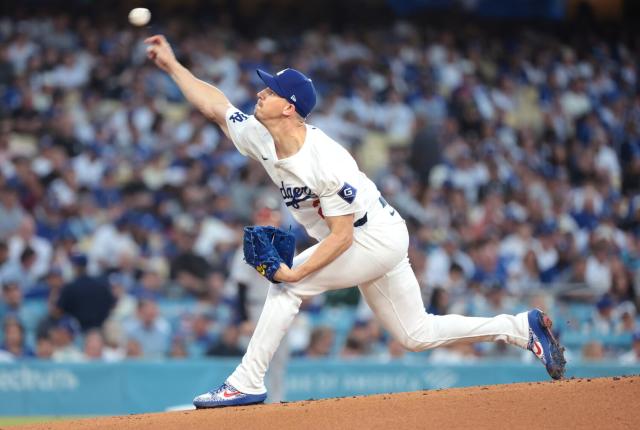Walker Buehler Three weeks ago, Mark Prior, the Dodgers’ pitching coach, decided it was time for a fundamental shift. Having observed Walker Buehler’s struggles through ten difficult starts this season, following his return from a second Tommy John surgery, Prior recognized that the pitcher needed to focus on the basics. Buehler had been experimenting excessively with his pitching mechanics, leading to inconsistent performances that marred his 2024 season. Prior’s message to Buehler, ahead of a bullpen session in St. Louis last month, was straightforward: it was time to get back to core principles.
Buehler’s season had been a rollercoaster of volatility. His fastballs, while still powerful, lacked precise command, and his breaking pitches were often erratic—either missing the strike zone or hanging in the middle, making them easier targets for hitters. The inconsistency was stark; Buehler struggled to maintain any reliable aspect of his game, and his pitches seemed to be hit-or-miss, reflecting a significant departure from his usual form.
This lack of consistency was particularly frustrating for Buehler, a former two-time All-Star known for his typically steady performance on the mound. The pitcher himself acknowledged that while he occasionally found good command over a few pitches, entire games would slip away when he couldn’t maintain that control. “There’d be times that I would [command the ball] three or four in a row and be fine or whatever,” he reflected. “And then games — whole games — where I couldn’t do it at all.

Returning from nearly two years away due to his second Tommy John surgery, Buehler faced not just physical challenges but also mental ones. The list of successful pitchers who have returned from two Tommy John surgeries is notably short, and despite his fastball still averaging 95 mph and his secondary pitches showing promise, Buehler’s performance had been far from stellar. The uncertainty of whether he could ever regain his former level of play loomed large over him.
The struggles were compounded by the complexity of pitching mechanics. Buehler compared his situation to a golfer dealing with a flawed swing, where any inconsistency can lead to a range of poor outcomes. Without a solid baseline, it becomes exceptionally difficult to make effective adjustments.
The turning point came during a bullpen session in St. Louis, where Prior delivered a clear and direct message: it was time to simplify and focus on improving Buehler’s delivery. The emphasis was placed on mastering the fundamentals—throwing strike one and getting ahead in the count, which had been lacking in Buehler’s earlier outings. The aim was to eliminate the overthinking and return to a more fundamental approach to pitching.
This shift began to yield results almost immediately. In his subsequent appearances, Buehler demonstrated marked improvement. On August 28, against the Baltimore Orioles, he executed three first-pitch strikes, a significant milestone as it was only his second 1-2-3 first inning of the season. This outing was followed by a promising performance against the Angels, where Buehler notched more strikeouts than hits allowed for the first time since May. His recent starts were characterized by a renewed sense of control and effectiveness, which Buehler attributed to feeling more like himself on the mound.
The Dodgers’ pitching coach and manager Dave Roberts noted the significant progress. Roberts emphasized that Buehler’s recent performances reflected a shift from mechanical concerns to a competitive mindset. Buehler’s ability to get back into a competitive mode and execute pitches effectively was seen as a positive development, especially with the playoffs approaching.
As the Dodgers head into the final stretch of the season, Buehler’s return to form has rekindled hopes that he could be a viable option for the postseason rotation. His ability to adapt and simplify his approach has reinvigorated his performance, offering a glimmer of hope for the team’s pitching depth as they look towards October. The focus now is on maintaining this newfound consistency and leveraging it for a potential playoff push, a turnaround made possible by returning to the fundamental aspects of pitching.
